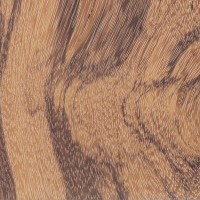 |
Common Name(s): Marblewood, Angelim Rajado Scientific Name: Zygia racemosa (syn. Marmaroxylon racemosum) Distribution: Northeastern South America Tree Size: 65-100 ft (20-30 m) tall, 1-2 ft (.3-.6 m) trunk diameter Average Dried Weight: 63 lbs/ft3 (1,005 kg/m3) Specific Gravity (Basic, 12% MC): .77, 1.00 Janka Hardness: 2,530 lbf (11,250 N) Modulus of Rupture: 22,780 lbf/in2 (157.1 MPa) Elastic Modulus: 2,818,000 lbf/in2 (19.43 GPa) Crushing Strength: 10,990 lbf/in2 (75.8 MPa) Shrinkage: Radial: 6.0%, Tangential: 10.5%, Volumetric: 17.5%, T/R Ratio: 1.8 |
Color/Appearance: Heartwood is yellow to golden brown, with irregular brown, purple, or black streaks. Paler sapwood is about one inch thick and is solid yellow, lacking the contrasting streaks found in the heartwood.
Grain/Texture: Grain tends to be straight or slightly interlocked; texture is medium with open pores.
Endgrain: Diffuse-porous; large pores in no specific arrangement, few; solitary and radial multiples of 2-3; yellowish deposits in pores abundant; growth rings indistinct; narrow rays not visible without lens, normal spacing; parenchyma vasicentric, aliform (winged and lozenge), and confluent.
Rot Resistance: Rated as durable to very durable regarding decay resistance, with moderate resistance to insect attack.
Workability: Tends to be difficult to work on account of its high density. Marblewood can have a moderate to severe blunting effect on tool cutters. Glues, turns, and finishes well—though there is a high risk of checking and resin exudation during drying.
Odor: Marblewood can have a distinctive—though usually faint—scent while being worked.
Allergies/Toxicity: There have been no known adverse health effects associated with Marblewood. See the articles Wood Allergies and Toxicity and Wood Dust Safety for more information.
Pricing/Availability: Marblewood prices tend to be in the mid to upper range for an imported exotic hardwood.
Sustainability: This wood species is not listed in the CITES Appendices or on the IUCN Red List of Threatened Species.
Common Uses: Flooring, sliced veneer, turned objects, cabinetry, and fine furniture.
Comments: The high contrast between the golden body and the much darker streaks give it an appearance somewhat similar to natural marble, hence the common name of “Marblewood” for this species. Marblewood’s overall appearance is very similar to Zebrawood, though Marblewood tends to have a slightly finer texture.
 |
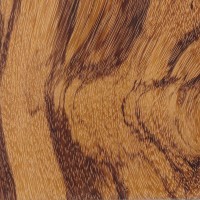 |
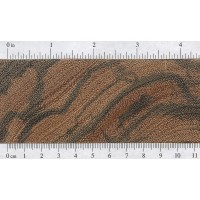 |
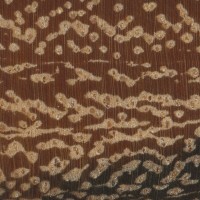 |
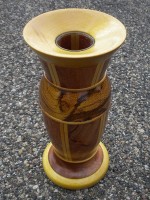 |





Beautiful wood with a very compact structure, which is harder in practice than you might think. During processing, it has an unpleasant smell (especially when drilling holes) similar to wet dog hair. Fortunately, the smell disappears over time
The neighbour brought over a couple of ~ 2”x6”x24” pieces. He wants me to make a heavy rectangular frame to put under his audiophile turntable. I jointed one side on the 8” jointer at a slow feed rate. Then on to the planer to for the other side and then back to the jointer for one edge. Next we ripped the last edge and ripped to width on the table saw with a freshly sharpened blade. It cut, jointed and planed well with hardly any chip out. It will only require minimal sanding. It is very hard and it will… Read more »
What causes the irregular grain or color pattern in woods such as marble wood?
Hi Eric. Just wondering what syn means in the context of genus and species. I know the definition of synonym (i.e. “nearly the same”), but in your context does it mean “one and the same”. i.e. in the example of Marblewood, would you consider Zygia racemosa and Marmaroxylon racemosum to be one and the same and have the same end-grain or would you consider them to be almost the same with differing end-grain.
In botany, the definition of a synonym is a bit different. It’s not “nearly the same” but it IS the same. More or less, it usually means that a tree has been reclassified into another genus (retaining the same species name in most cases) and now the old name is obsolete — a synonym for the current name.
The guys at the shop that sold it to me said they hadn’t worked with it before because this was the first time they got it in. I picked up a small piece to cut pen blanks. I didn’t have too much issue turning the test piece.
The dust tended to make me choke even with a mask. End grain is very open, but I loved the end result.
I turned a hiking stick handle today, and it went fine. I did stop to sharpen my goes a couple times, but at show speeds (700 rpm or so), it did well. Scrapers could cause some tearing.
good meme
If you have a SawStop, make sure you cut marblewood in Bypass mode! I tested it against the blade and the red light flashes indicating it would trip the brake mechanism if cut. My wood is very dry, wax coated, from a reputable store. Other wax coated wood does not trip the indicator light. Something about the marblewood……..
Just curious if you know the moisture content of the wood for sure? Anytime the wood is wax coated, I expect high moisture levels.
I use a lot of wax coated wood, this is the only one that ever triggered the warning. Even after I sawed off the end and presented the bare wood it still lit up. I guess it is possible this piece was not totally dried, but it felt dry. I do not own a moisture meter. Even so, I think any new wood, especially exotics and/or waxed, should run that test first rather than killing an $80 brake cartridge and a $75 blade.
yesa
I wish i had read this before i started working my my marblewood. BUT I did re-sawed a 24″ piece of 5/4 marblewood with our sawstop, at work, and had no problem at all. It passed through the blade 6 or 8 times w/o any problem. Oh well i guess I was LUCKY!
I just cut 12 pieces sealed with wax I got at Woodcraft and had no problems, but that wood does not feel moist at al when I cut it. Who knows how long it had been sealed?
I got a piece of marble wod to make puzzles on my scroll saw. Used 2 blades on a piece of maple, same patton in marble wood use twelve blades. Hard stuff.
If the wood heats up, it will crack
Trevor –
I’ve done some, but not much, work with marblewood. I had a lot of splintering and tear out problems on account of its long grain. I’d say that the only advice I’d give is to:
1. Make sure your cutters are dead sharp, and
2. Consider scoring every cut or raising the blade 1/8″ and using multiple passes to make each cut.
Best of luck.
Marblewood is an extremely difficult wood to work I don’t know how I am going to make a pen out of this wood.We just started turning this stuff and already its giving us problems, it stops when we try to cut it…need some advice.
~Trevor